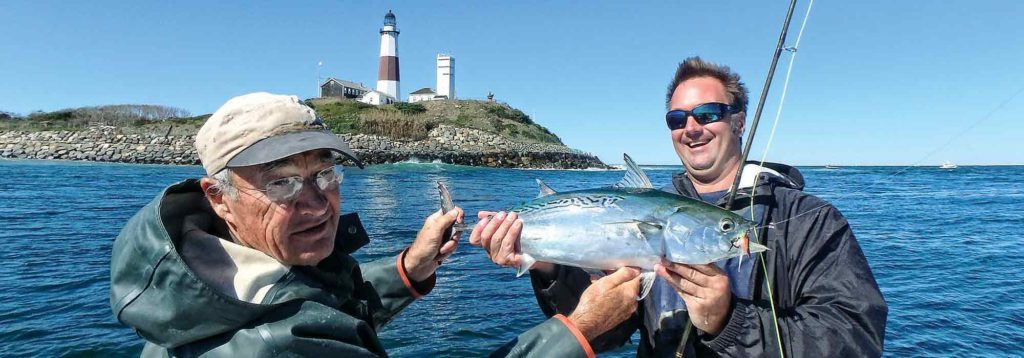
It’s hard to keep your nerves in check when the water in front of you is churned to a froth by slashing predators and frantic baitfish going airborne. Never before had I been faced with such a flurry.
Stripers, bluefish and false albacore had all converged off Montauk Point and were crashing in front of me. Just trying to decide where to cast was enough to short-circuit an angler’s brain.
Capt. John McMurray had his 33-foot Contender One More Cast in the perfect spot, and I did my best to keep cool, mouthing the words, “Take it slow, calm down man.” McMurray’s instructions prompted me into action. “Get that fly in front of the school,” he urged. So I flung a Surf Candy 10 yards ahead of the approaching turmoil and began to strip. “Strip man, faster,” McMurray barked. I did, and bang! The line suddenly came tight, the 10-weight rod bent down, and soon backing zipped off the reel, giving up the fish’s identity: a false albacore, 7 pounds of pure muscle, that we released to fight another day after a spirited 10-minute battle.
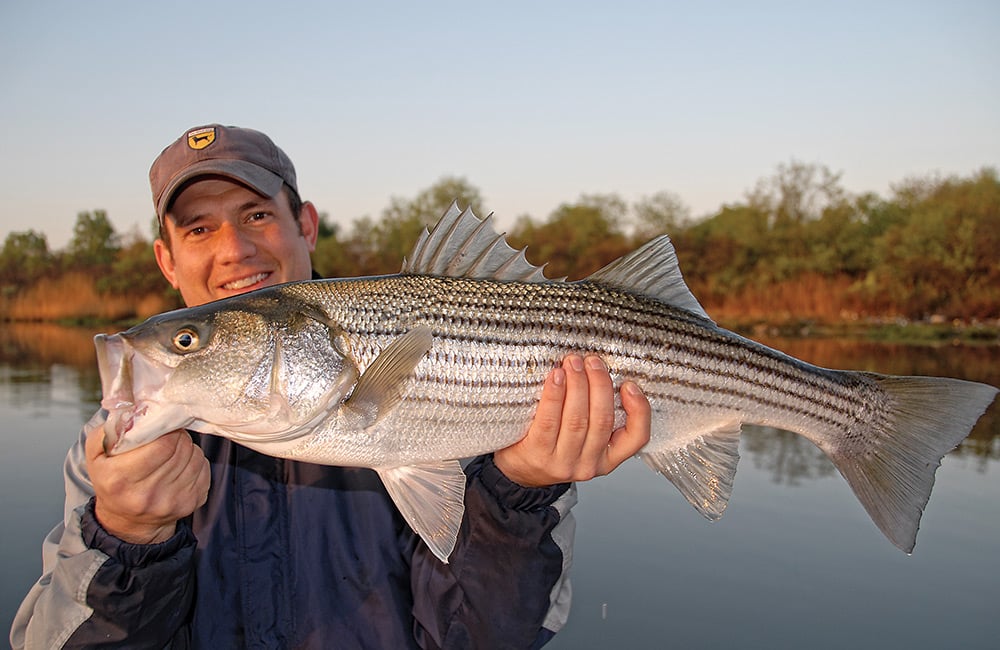
Turbulent Turf
For over 100 years, Montauk’s prominent lighthouse has solemnly stood in the background during countless skirmishes between anglers and striped bass, bluefish and false albacore off the surrounding hallowed shores. Montauk Point is a confluence where all the necessary factors come together: a number of rips, underwater boulders, a kelp-laden coastline and plenty of forage. A spot commonly known as “The Rip” is the angling epicenter. It’s where currents push around the Point, often colliding with shifting winds to create a froth, right in front of the lighthouse.
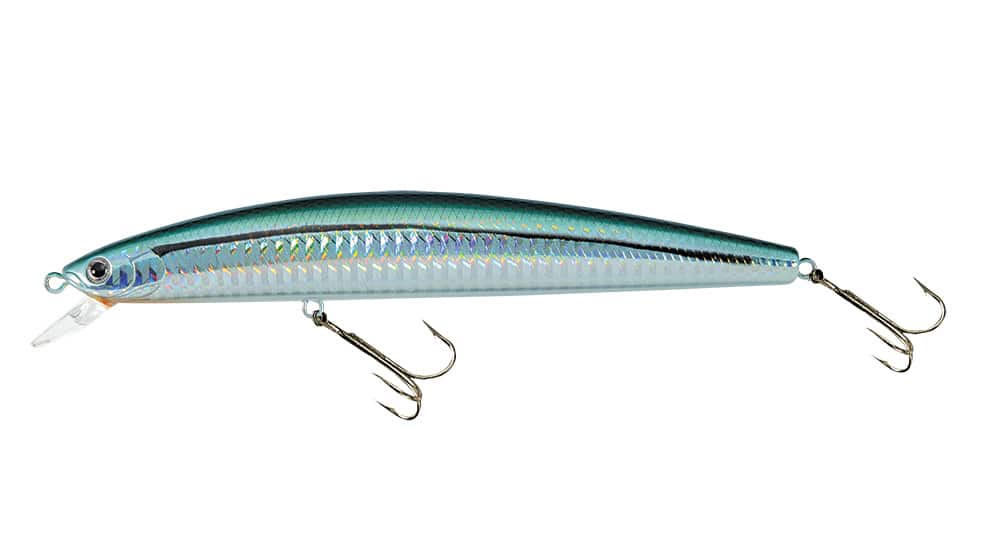
The churning waters create confusion for schooling baitfish, allowing bass, blues and albies to ambush prey in surprise attacks. On the south side of the Rip lie towering, hard-packed sand and clay cliffs, piscatorial landmarks sporting catchy names such as Warhol’s, Ditch Plains and Turtle Cove. On the north side of the Point, boulder-strewn stretches known as Stepping Stones, Shagwong Point and False Point are striper havens. Big bass go there to feed on lobsters and crabs that inhabit the submarine structures. Fort Pond Cove, a little farther west, attracts roving schools of albies, bass and blues that trap bait inside the cove.
With water temps fluctuating between 60 and 70 degrees, ideal for bass, blues and albies, June through October is prime fishing time around Montauk. That’s also when bay anchovies, spearing, sand eels and peanut bunker congregate and flitter in and out. Water depths run as shallow as 8 feet off Shagwong Point to more than 45 feet off Ditch Plains.
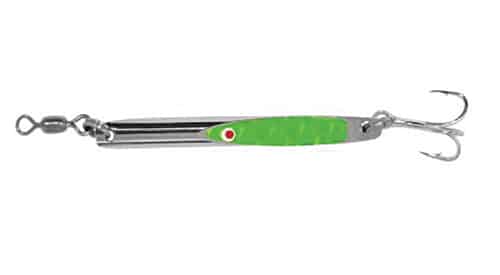
Take it to the Top
A northeast wind was whipping 20 to 25 knots as we breached Montauk Inlet at sunrise and raced toward The Rip, navigating some sketchy 4- to 6-foot swells. McMurray rounded the Point and tucked around the leeward southwest side, where we immediately spied sporadic signs of false albacore popping up in 40 feet of water off Ditch Plains. “Albie schools push almost to the breakers here,” said McMurray, keeping the motor in gear to stay just outside the breaking surf. Launching a Deadly Dick toward the backside of the breakers, the metal lure was instantly lambasted by albies four casts in a row, perfect to get the blood flowing.
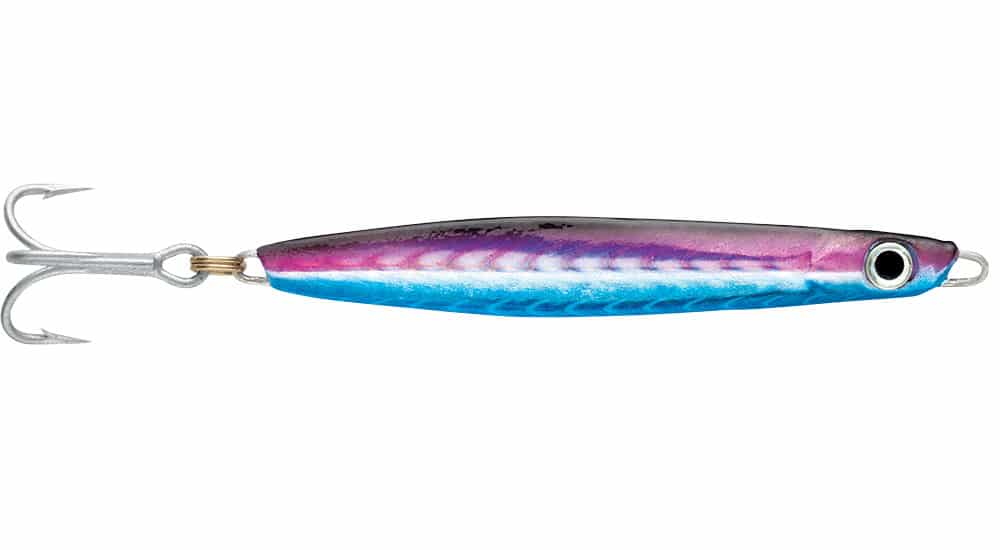
Kristyn Brady and Geoff Mullin of the Theodore Roosevelt Conservation Partnership were with us, and Brady had never hooked a bluefish, so we ran around the rip off Shagwong Point where schools of 5- to 12-pound blues were going ballistic. We’d connected steel leaders and latched on topwater poppers to the spinning outfits when McMurray pointed Brady to cast toward a roiling area where bluefish schools were blowing up bait. Her popper was immediately shellacked by a 10-pound blue, with three others following the hooked fish boat-side. “You can catch them on nearly every cast with that popper,” McMurray said. That was no exaggeration as both Brady and Mullin pulled one chopper after another. “If we don’t see them busting the surface, metal jigs like the Ava 007 or Deadly Dicks usually get hit on blind casts.”
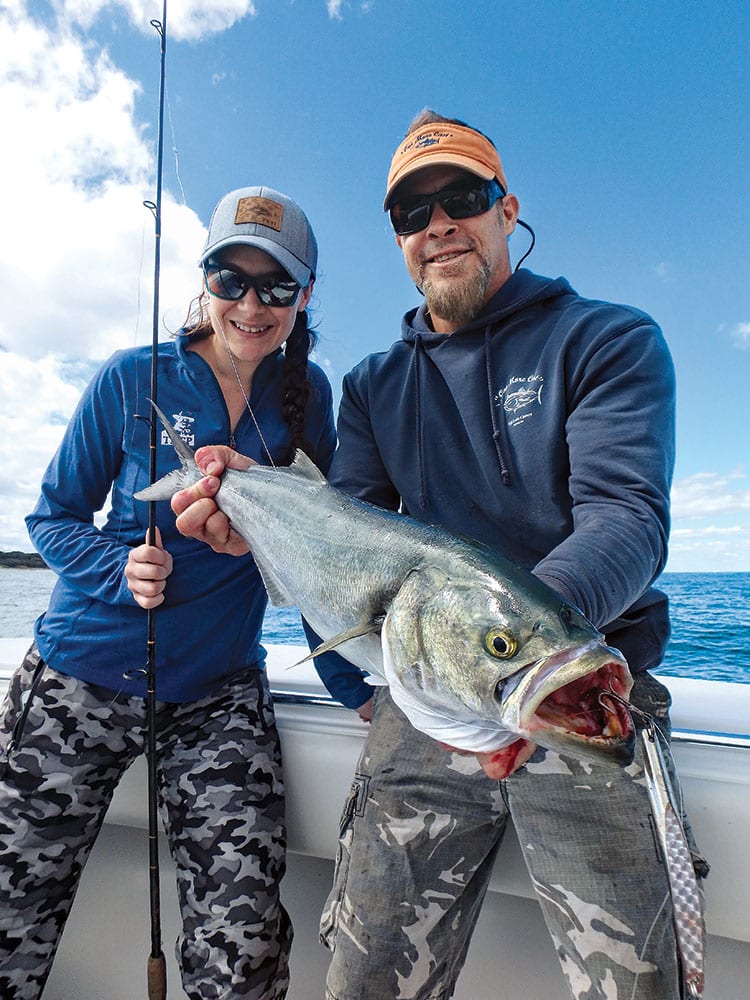
Shortly after, we witnessed surf-casters launching 3-ounce Polaris poppers around submerged rocks suddenly button up with 15-pound-class stripers. McMurray noticed their poppers were rigged with anchovy-size 3/0 bucktail teasers, which seemed to be getting the attention of the bass. Surf-casters often use the heavy poppers, not necessarily because the bass will hit them, but to get that smaller teaser out far enough to reach the feeding zone.“
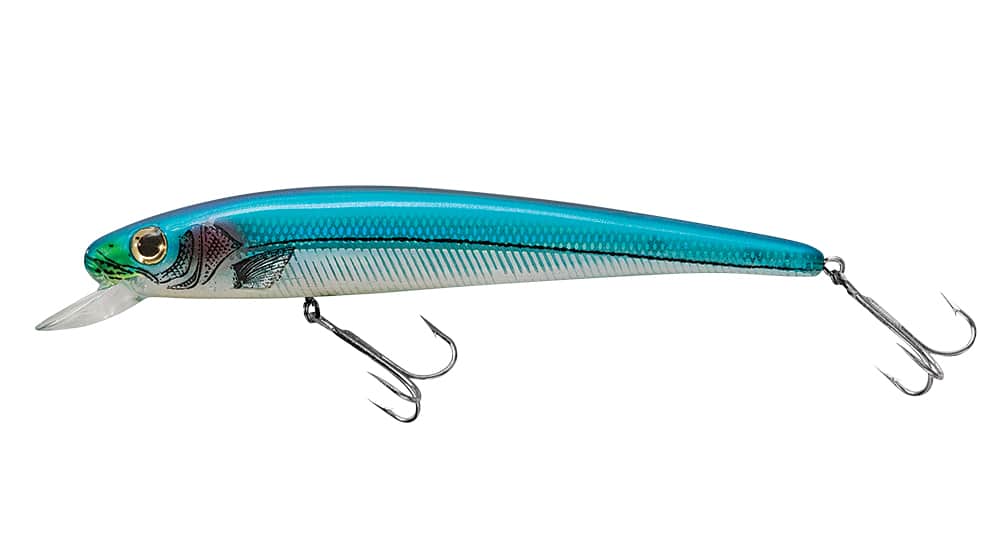
You can blind-cast for stripers around the boulders off Shagwong. They hang tight to the boulders to ambush bait,” McMurray explained. “Bay anchovies are the predominant bait around here, and when they move in, striper fishing goes off. Those poppers trigger reaction strikes from the bass, but we frequently fly-cast with Surf Candies and Clousers to mimic the small stuff for better success.” Mullin proved that point when he later hooked a 26-inch linesider by stripping a Surf Candy in long, sweeping pulls.
McMurray also says the rip really turns on for stripers as it gets into September and October. Menhaden schools are plentiful by then, so you can catch trophies on larger stuff like Bomber plugs, and some have success dropping diamond jigs to the bottom in 20 to 40 feet of water and sweeping them through the rips.
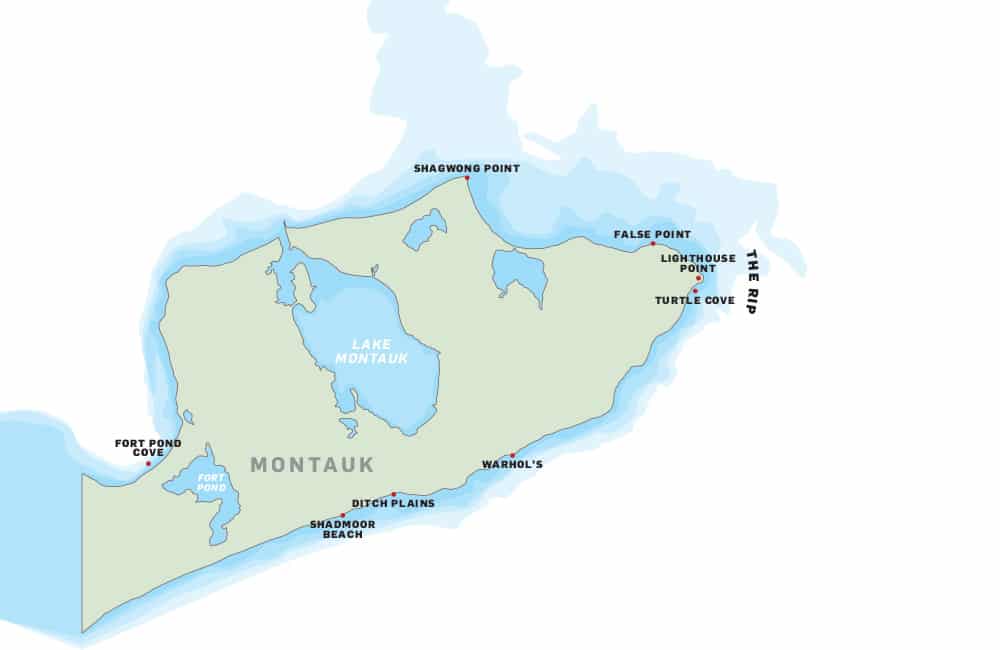
Lightning Strikes
The next day, Mullin and I fished with Capt. Ted Williams, who tucked back into the cove at Fort Pond to chase breaking albie schools corralling anchovies in the back pocket. The wind was blowing 25 to 30 knots out of the north, less than desirable for fly-casting, so I punched a Gomoku jig through the wind and was rewarded with a zippy 6-pound little tunny. But Mullin was hellbent on fly-fishing, so Williams ran to the other side of the Bluffs to get out of the wind.
Behind the cliffs off the south side of Turtle Cove, glassy conditions with a large groundswell allowed us to blind-cast Albie Whore flies effortlessly, and eventually an albie came up and gulped one. As I settled in to fight the fish, I turned just in time to see Mullin hook up another red-hot albie. Fast and furious action followed as little tunny invaded the area. “Put the fly 20 yards in front of the school and let it sink for a three-count before you strip,” Williams said. “And remember, albies are visual strikers; they want a fast presentation.”
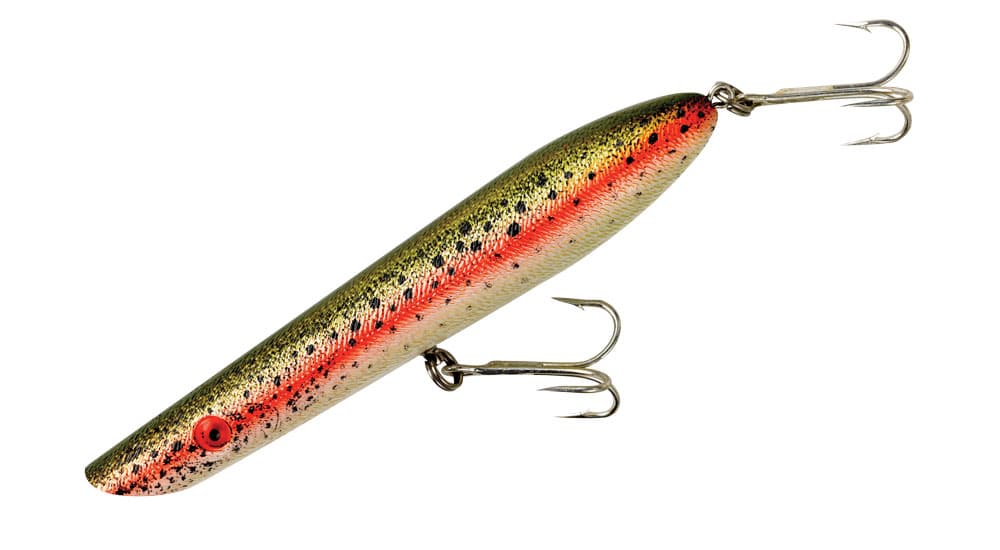
Albies were breaching all around us, casts were going everywhere, and most were yielding hookups. But the sun was about to start setting, and Williams blurted out, “Let’s get to the inlet. They’ve been crushing bait there at sundown.” Sure enough, the inlet was nothing but crashes and splashes. Mullin and I played catch-and-release with albies while trying, albeit unsuccessfully, to avoid the 5- to 10-pound chopper blues mixed with the little tunny, adding to the excitement. When darkness finally fell, the albies went ghost, but not before we got our kicks, pulling on over a dozen more speedsters.
On the way back in, I could barely see Mullin’s face when he said, “Well, I landed bass, blues and albies on the fly rod. I think that’s mission accomplished.” After a silent tally of my own, I agreed wholeheartedly, convinced that Montauk’s reputation is indeed well-deserved.
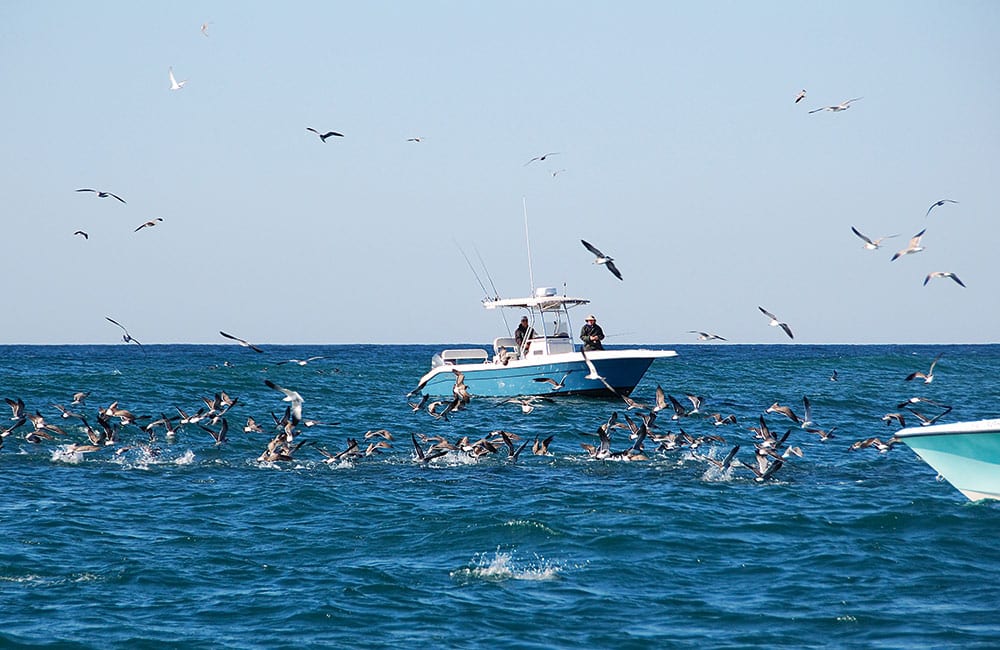
SWS Planner
What: Striped bass, bluefish and false albacore
Where: Montauk Point, New York
When: June through October
Who: The following guides are Montauk experts.
Capt. John McMurray, One More Cast; 718-791-2094
Capt. Brendan McCarthy, Urban Fly Guides; 917-847-9576
Essential Baitfish Flies
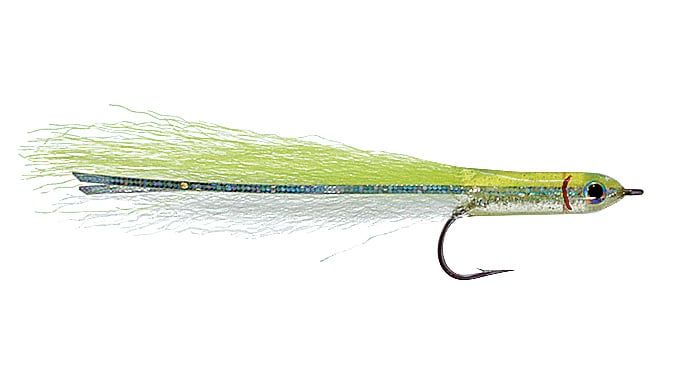
Surf Candy offers a lifelike appearance and the durability to withstand several go-rounds with toothy species.
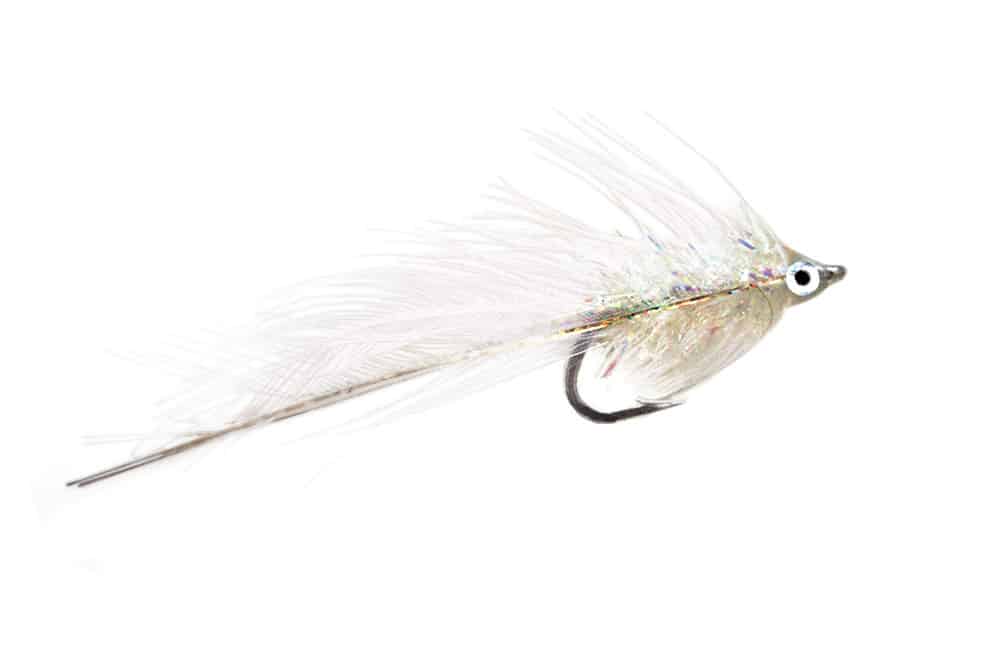
Albie Whore is also quite durable and lifelike. A feather body instead of nylon produces more natural action.
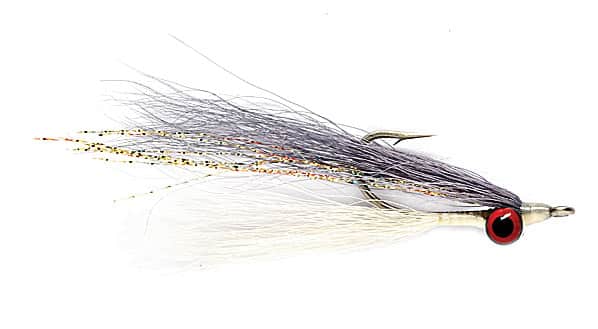
Clouser Minnow combines a baitfish silhouette with weighted eyes to draw strikes deeper in the water column.
Fast Facts for Success
Cash on Flash: Work flashy lures and flies in an erratic fashion around the outskirts of any baitfish school.
Need for Speed: False albacore and bluefish are notorious reaction strikers that respond to fast retrieves.
Artificial Sweetener: A small jig tied to the back of a popper acts as a teaser and accounts for many stripers.
SWS Tackle Box
Striped Bass, Bluefish and False Albacore
Rods: 7-foot fast-action spinning, 20- to 30-pound class; 9-foot, 10-weight fly rod
Reels: Shimano Stradic 6000C or equivalent; Sage 4200 fly reel or equivalent
Line: 30- to 50-pound braid for spinning; clear intermediate or floating fly line
Lures: Metal jigs, surface and diving plugs
Flies: Albie Whore, Surf Candy, Clouser Minnow
Leader: 25- to 50-pound fluoro; 20-pound tippet (with wire trace for bluefish)









